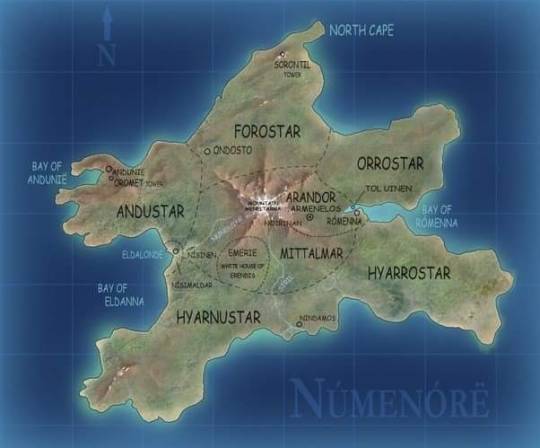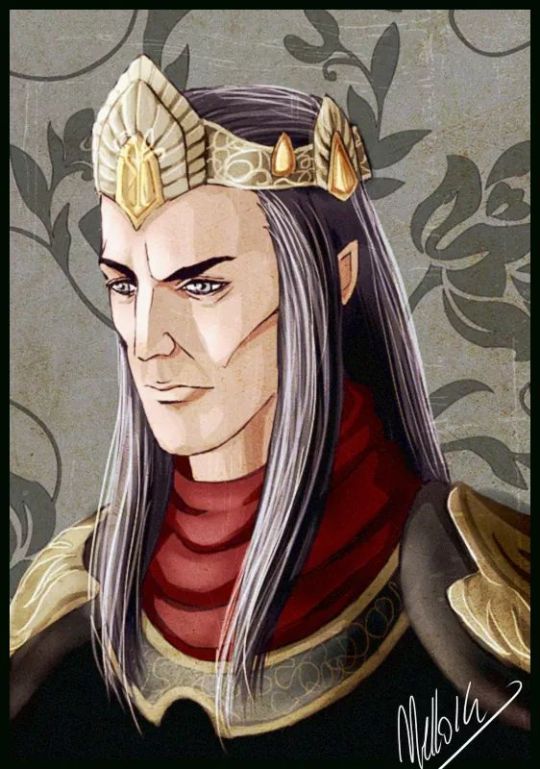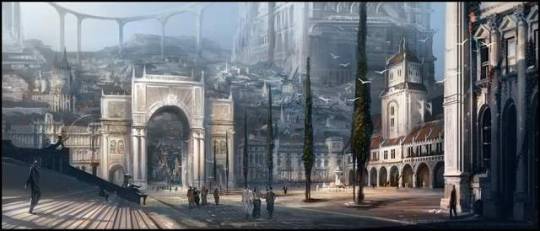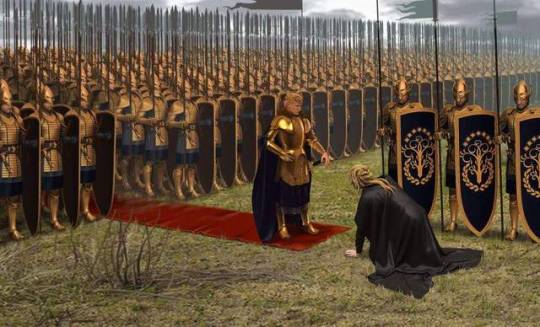#and later exiling sauron around the time of the burning of nimloth
Text
@general-illyrin @tar-thelien @who-needs-words I think you all mentioned being interested in the reverse gondolin au - is anyone interested in helping with wrangling the timelines, especially the second age stuff? Here's the current outline:
(Edit: anyone feel free to help out if you're interested!)
YT 14365 - Birth of Lomion
YT 14373/FA 1 - Death of Argon
FA
2 - Aredhel adopts Lomion
300 - Birth of Idril
316 - Turgon & Idril kidnapped by Eol
400 - Turgon & Idril rescued. Death of Eol
465 - Finrod more-peacefully passes throne to orodreth while on Quest. Everyone except beren still dies
472 - Nirnaeth. Turgon named High King of the Noldor.
476 - Turgon abdicates official title. Aredhel named High King of the Noldor.
496 - Tuor comes to Gondolin
502 - Wedding of Idril and Tuor
503 - Births of Earendil and Elwing. Idril begins to have foresight dreams about the Fall.
506 - Second Kinslaying. C^3 dead, celebrimbor stays in gondolin. Aredhel denounces the oath/kinslaying and disowns C^3
Elwing survives & is found by Oropher & Thranduil // Galadriel & Celeborn. oropher, thranduil, oropher's wife, and thranduil's then-gf // galadriel & celeborn take Elwing to Gondolin as refugees. The Silmaril is left hidden in the woods of melian's domain.
507 - Elwing comes to Gondolin.
509 - Idril captured by Morgoth. Idril reveals the location of Gondolin in exchange for an Oath to not harm her family (Turgon, Tuor, and Earendil). Idril rescued.
510 - Gondolin prepares for war with Morgoth.
513-522 - Siege of Gondolin. Deaths of Duilin and Rog. Gothmog slain by Aredhel the Huntress. First use of the Three Rings by Lomion and Celebrimbor in defense of Gondolin. House of the Hammer of Wrath destroyed.
523 - Maedhros believes a Silmaril is with Elwing at Gondolin.
525 - Earendil weds Elwing. Lomion weds ???. Adoption of Gil-Galad
532 - Births of Elrond and Elros.
538 - Third Kinslaying at Gondolin. Death of Amras. Elrond and Elros kidnapped by Maglor. Deaths of Elwing and Turgon. Second use of the Three Rings by Lomion and Celebrimbor. Deaths of Maedhros and Aredhel. Lomion named King of Gondolin and High King of the Noldor. Deaths of Salgant, Penlod, and Tuor. Earendil named Lord of the House of the Wing.
540-549 - War declared between Gondolin and the Feanorians of Himring over the Third Kinslaying and kidnapping of Princes Elrond and Elros.
549 - Elrond and Elros recovered. Feanorians and Gondolin severely weakened. Celebrimbor // Gil-Galad declared heir to the High Kingship.
552-554 - Second Siege & Fall of Gondolin. Third use of the Three Rings by Lomion and Celebrimbor. Deaths of Ecthelion, Glorfindel, Egalmoth, and Turgon. Idril and Celebrimbor lead survivors through the Secret Way.
555 - Gondolithlim refugees arrive at Sirion.
556 - Idril departs for Valinor.
558 - Earendil searches for Valinor.
560 - Havens of Sirion destroyed by Morgoth. Gondolithlim/Doriathrim survivors scattered. Elrond and Elros rescued (as adults) by Maglor.
572 - Morgoth controls Beleriand. Earendil and reembodied Elwing come to Valinor and rally the Host.
575-617 - War of Wrath
618 - Maglor claims the Silmaril from Eonwe's camp and casts himself into the Sea. Death of Maglor.
620 - End of the First Age.
SA
1 - Founding of the Grey Havens and Lindon under High King Lomion
2 - Elros becomes the first King of Numenor
c. 500 - Sauron returns to Middle-Earth in the East.
650 - Eregion is founded
1000 - Galadriel is given Vilya; Lomion wields Nenya
1170 - Annatar comes to Lindon and Lomion turns him away. Lomion warns Celebrimbor of Eregion of his suspicions.
1200 - Annatar comes to Eregion. Celebrimbor takes him in to monitor.
1250 - Celebrimbor creates the Seven; Lomion creates the Nine.
1410 - Annatar is kicked out of Eregion.
1600 - The One Ring is forged. Sauron remains in hiding.
1610 - Sauron begins to gather and prepare armies in the East.
1673 - War of the Elves and Sauron begins.
1675 - Sauron invades Eriador.
1677 - Fall of Ost-in-Edhil. Celebrimbor and Lomion remain at the House of the Mirdain. Death of Celebrimbor in battle // Fourth use of the Three in battle. Sauron does not learn of the Seven. Founding of Imladris.
1678 - Sauron defeated by the Numenoreans and the Elves of Lindon.
1679 - Sauron flees to Mordor. First White Council held.
3147 - Civil war in Numenor.
3225 - Ar-Pharazon seizes the Sceptre.
3228 - Elrond claims the Sceptre. Ar-Pharazon disowned. Tar-Miriel named Ruling Queen.
3232 - Sauron taken to Numenor as a prisoner.
3274 - Elrond kicks Sauron out of Numenor and outlaws the morgoth cult.
3310 - Morgoth cult publicly reappears.
3319 - Downfall of Numenor. Tar-Miriel leads a greater force of the Faithful away.
(green // blue means two main options, red means i need to think about it more)
The main details I'm figuring out right now are
does Celebrimbor still die at Eregion - I don't think he's getting captured/tortured, but he could still die in the battle. On the other hand, he could probably survive by using Narya & Lomion using Nenya, but that would definitely have repercussions further down the line
how does Idril's deal work - I'm currently thinking of Idril exchanging the location of Gondolin for her family's guaranteed safety, because it seems in character for Reverse Idril? But on the other hand, even if I limit it to immediate family at the time of the oath (tuor, turgon, earendil) then idk where turgon dies? Maybe Maglor can kill him but that seems kind of random
where and how does Turgon die
how does Prince Elrond's character even work
how does Numenor still fall when factoring in Prince Elrond - I'm thinking that the morgoth death cult gained enough traction during the time sauron was there that even after Elrond kicks him out, the cult still sticks around and reemerges later? The Fall still happens, but they never go to attack valinor and there's a good deal more Faithful (maybe 40-60%?)
#silm#silmarillion#not art#reverse gondolin au#basically elrond is giving me a Lot of trouble here#i tacked an extra 30 years onto the FA (so the SA dates are mostly shifted up by 30 years to balance it out; hence elros being king in SA 2#this means e&e were adults during the Fall of Gondolin and the war of wrath and all#so instead of 'kind as summer' elrond of the last homely house in rivendell#we have gondolithrim veteran/dragonslayer Prince Elrond of Imladris Stronghold#and later the Bastion of the Faithful of Numenor#ironically enough he turned out way more feanorian when not raised by feanorians#instead of sirion e&e's defining Childhood Trauma was the gondolin kinslaying#in which mae and aredhel duel to the death while screaming at each other about fingon's fate and the Oath#and argon and elenwes deaths on the helcaraxe#also elwing fully died trying to protect them in this one#and then e&e were like 20something and sons/grandsons of two Lords durign the FoG so obviously they ended up fighting there too#and then again at the war of wrath#and by the mid SA elrond has already lived through so many wars he's running rather low on hope#so Prince Elrond still tries to be kind but is also substantially more willing to threaten people if need be#after eregion he founds imladris as a haven but also an impenetrable fortress#he saw the fall of gondolin and he knows that rivendell couldn't last forever#but he believes he can make it last long enough to defeat sauron first#or at least push him back so that the refugees of eregion can rebuild and survive#meanwhile celebrimbor takes up the last homely house role#but yeah Prince Elrond is pretty interesting#he intervenes more with numenor bc hes watching them self destruct and knows (bc foresight) exactly what would happen#so he tries (eventually in vain) to prevent it by disowning and exiling ar pharazon#and later exiling sauron around the time of the burning of nimloth#but it's too late and the morgoth cult already gained enough traction#on the other hand there's a lot more Faithful led by tar-miriel
59 notes
·
View notes
Photo







Númenor was a great island brought up out of the sea by the Valar for the Edain to dwell in, in the early Second Age after the final ruin of Beleriand in SA-40, officially founded in SA-32, and was where the Númenoreans originated from. The name is from the Quenya Númenórë: "West-land", which Tolkien translated as Westernesse (which was Anadûnê in the Númenórean language). Númenor was the kingdom of the Númenóreans and subsequently the Dúnedain, located on an island in the Great Sea of Belegaer, between the continents of Middle Earth and Aman. The land was brought up from the sea as a gift to Men. It was also called Elenna or The Isle of Elenna ("Starwards") because the Dúnedain were led to it by the star of Eärendil, and because the island was in the shape of a five-pointed star. At the center of the island the mountain Meneltarma was used by the Dúnedain as a temple to Eru Ilúvatar. The largest city and capital of Númenor was Armenelos. After the great war with the Dark Lord Morgoth, the Valar took pity on the House of Bëor for their sufferings and losses and gifted them a new prosperous home to build new lives in. These Men grew to establish one of the greatest civilizations ever seen in Arda. Númenor had only two rivers: Siril, which began at Meneltarma and ended in a small delta near the city of Nindamos, and the Nunduinë, which reached the sea in the Bay of Eldanna near the haven Eldalondë. Elros son of Eärendil The Mariner, and brother of Lord Elrond Half-Elven was the first King of Númenor, taking the name of Tar-Minyatur ("First King"). Under his rule (year SA-32 to SA-442 of the Second Age), and those of his descendants, Men rose to become a powerful race. The first ships sailed from Númenor to Middle Earth in the year SA-600 of the Second Age, some came to trade with the elven realm of Lindon, some came to colonize Eriador and expand the reaches of Nùmenor culture. The Númenóreans were forbidden by the Valar from sailing so far westward that Númenor was no longer visible, for fear that they would come upon The Undying Lands, to which Men could not come as mortals. Over time the Númenóreans came to resent the Ban of the Valar and rebelled against their authority, seeking the everlasting life that they believed was begrudged them. They tried to compensate this by going eastward and colonizing large parts of Middle Earth, first in a friendly way, but later as tyrants. Soon the Númenóreans came to rule a great but terrorizing maritime empire that had no rival, but a few noble houses, (The Faithful) remained loyal to the Valar and friendly to the elves, traditions referred to as The Old Ways. But in Middle Earth in the year SA-1600 the Dark Lord Sauron (former commander of Morgoth), enemy of the Valar, deceived the Elven smiths of Gwaith-I-Mirdàin of Eregion and their leader Prince Celebrìmbor and forged a master ring. By SA-1693, the elves of Eregion and Dark Lord Sauron were at war when Celebrìmbor hid the three elven rings of power from Sauron's grasp, hindering him from completing his plan of subjegating the elven race. In SA-1699 the Elves were overrun and Eregion fell to Sauron's hordes with steel and fire. Númenor took notice and Tar-Minastir, King of Númenor sent a fleet to save Lindon from the approaching armies of Mordor, and by SA- 1701 Eriador was reconquered in a catastrophic defeat for Dark Lord Sauron where he barely escaped the field with one surviving bodyguard. Around SA-1800 Númenoreans started settling on the coast of Middle Earth in places such as Umbar, establishing a seafarer state. But Sauron extended his power and his shadow fell on Númenor. In the year SA-3255, the 25th king Ar-Pharazôn The Golden sailed to Middle Earth on a military campaign. The Númenoreans came in such force, that Sauron himself, surrendered to their might and came down from Barad Dûr willingly. This was Sauron's plan, to allow himself to be captured and work to turn the King's mind against the Valar, to bring about the downfall of Nùmenor. Sauron then poisoned the mind of the King and soon corrupted the Númenóreans, promising them eternal life if they worshiped Morgoth instead of the Valar. With Sauron as his adviser, Ar-Pharazôn had a 500 foot tall temple to Morgoth erected in which he offered human sacrifices and a prominent cult of Morgoth, consisting of dark sorcerers arose with Sauron leading them. During this time, the white tree Nimloth The Fair, whose fate was said to be tied to the line of kings, was cut down and burned as a sacrifice to Dark Lord Morgoth at the poisonous advice of Sauron, who had become Ar-Pharazôn's close friend and trusted councilor. Isildur, son of Elendil rescued a fruit of the tree before its destruction by sneaking into the royal gardens and salvaging a sapling, which grew to become the White Tree of Gondor, preserving the ancient line of trees. Isildur was however, discovered whilst rescuing the seed by guards, and he was mortally wounded although managing to flee. He lay in sickbed for months before his wounds healed in concert with the sapling starting to thrive. For this deed, Isildur received much praise and honour. Prompted by Sauron and fearing death and old age, Ar-Pharazôn built a great armada and set sail into the west to make war upon the Valar and seize The Undying Lands (Sauron remained behind promising to care for the kingdom in the king's absence as duly appointed interregnum ruler). In the year SA- 3319 of the Second Age, Ar-Pharazôn landed on Aman and marched to the closest city of Valimar, in the land of Valinor. Manwë, King of the angelic Valar, called upon Ilúvatar, who broke into a rage and changed the world, trapping Ar-Pharazôn and his mighty host who landed on Aman in mounds of dirt and inside The Caves of the Forgotten until the last battle of the world, taking Aman and Tol Eressëa from the spheres of Arda forever, changing the world's shape from flat to round and commanding Ulmo Vala of the seas to sink Númenor in a great tidal wave, killing its inhabitants, including the body of Sauron who was at the time with his cult of Morgoth and did not anticipate the Valar's wrath to such an extent, he was thereby robbed of his ability to assume fair and charming forms and remained unable to manifest at all for a long time, until his strength was regained. Elendil son of the leader of The Faithful Lord Amandil, during the reign of Ar-Pharazôn, his sons and his followers had been warned of the disaster that was to befall Númenor, and they had set sail in nine ships before the island fell. Lord Amandil had said his farewells to his son and grandsons and had sailed for the West to plead for the life of The Faithful fleet to the Valar. He was never seen again, but the fleet was indeed spared. They landed in Middle Earth in SA-3319, and founded the kingdoms of Arnor and Gondor, the Dùnedain realms in exile. After its fall, known as The Akallabêth to history, (Adûnaic: Downfall) Númenor was called Atalantë, meaning "the Downfallen", in the Quenya language. (The similarity with Atlantis is obvious, although Tolkien described his invention of the name as a happy accident when he realised that the Quenya root meaning "fallen" could be incorporated into a name referring to Númenor.) Other names after the Downfall include Mar-nu-Falmar ("Land under the Waves") and Akallabêth ("the Downfallen" in Adûnaic). The story of the rise and downfall of Númenor is told in the Akallabêth. It is unknown what will happen to Númenor in the future; whether it will remain forever under the sea or, like Beleriand, it will be recovered, as suggested by the final words of Lady Galadriel to Treebeard at their parting at Isengard: "Not in Middle Earth, nor until the lands that lie under the wave are lifted up again. Then in the willow-meads of Nan-Tathren we may meet in the spring. Farewell!". It is possible that after the Dagor Dagorath, when the world will be broken and a new one will be created, Númenor will then be recovered. The population of Númenor chiefly consisted of Men of the surviving houses of the Edain from The War of Wrath, and they were known as the Númenóreans, or rather, Kings among Men. They had been increased in body and mind by Eönwë at the end of The War of Wrath, and granted a lifespan of an average 200 years, much increased from their ancestors' lifespan of 90 years. Those of the royal house descended from the first Half-elven king, Elros Tar-Minyatur, however, were given a lifespan of more than 300 years. These included the Lords of Andúnië and the Kings and Queens of Númenor. Before the Shadow fell on the island, the westernmost cities such as Andúnië contained a small population of Elves because of their frequent visits from the isle of Tol Eressëa. The Númenóreans were extremely skilled in arts and craft, and in the forging of weapons and armour; but they were not warmongers, hence the chief art on the island became that of shipbuilding and sea-craft. The Númenóreans became great mariners, exploring the world in all directions save for the westward, where the Ban of the Valar was in force, they were the only ones known to have mapped and seen with their own eyes the continents of the Dark Lands, and the Hither Lands. What existed there however, was knowledge they took with them to their graves. They often traveled to the shores of Middle Earth, teaching the men their art and craft, and introduced farming so as to improve their everyday lives. When the Shadow fell, however, the Númenóreans became more unneighbourly with the Men of Middle Earth. They levied heavy tribute from them and returned to Númenór with ships filled with spoil. The Númenóreans became skilled in the art of husbandry also, breeding great horses that roamed across the open plains in Mittalmar. Although the Númenóreans were a peaceful people, their weapons, armor, and horse-riding skills could not be contested by anyone in Arda, save for the Valar. Númenor was a rather large island in the middle of the Western Sea. The island itself was in the shape of a 5-point star, each point having its own unique geological and physical features. Each point, therefore, was considered a separate region of Númenor and had separate names: Forostar (Northlands) Andustar (Westlands) Hyarnustar (Southwestlands) Hyarrostar (Southeastlands) Orrostar (Eastlands) Mittalmar (Inlands) The island had a mountain in the centre known as Meneltarma. Meneltarma was the highest location on the entire island and was considered sacred by the Númenóreans as a shrine of God, Eru Ilúvatar. Only the Kings of Númenor were allowed to speak on the summit. It was said that on a clear day, Tol Eressëa, an island on the outer shores of Valinor, could be seen from the summit. Meneltarma itself was a tall mountain in the center of the island (in the region of Mittalmar) that, when translated, means Pillar of The Heavens. The lower slopes of the mountain were gentle and grass-covered; however, near the summit the slopes became more vertical and could not be ascended easily. The kings later built a spiraling road to the peak, beginning at the southern tip of the mountain and winding up to the lip of the summit in the north. The summit, however, was unique in that it was flattened and somewhat depressed, and was said to be able to "contain a great multitude". It was considered the most sacred spot of Númenor; no one ever set foot there and nothing was ever built there throughout the entire history of the island. The island itself was tilted southward and a little westward; the southern coasts were all steep sea cliffs. ~Drauchìr
2 notes
·
View notes